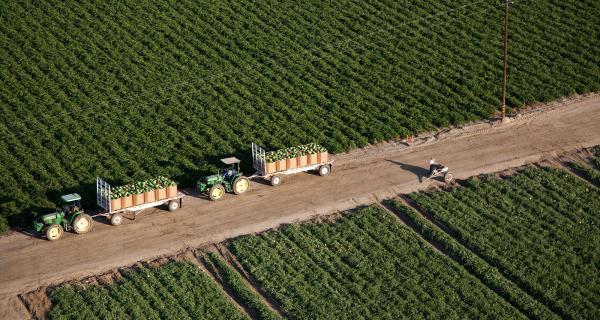Pollination Makes Everything Possible

All life on the farm is interconnected—especially when it comes to pollination. While wind and water carry some pollen, animals help to pollinate an estimated 87.5 percent of flowering plant species. These animals come in many shapes, sizes, and numbers—including a diverse spectrum of life from honey bees to humans.
There are thought to be some 200,000 to 350,000 different animal species believed to act as pollinators. Of these, around 1,000 are vertebrates (animals with backbones or spinal columns) including birds and small mammals such as bats or some marsupials. The vast majority of the remaining pollinator species are insects. And alongside other important insects like the monarch butterfly and wild bees, we can thank honey bees for pollinating many crops around the world.

Supporting bee health
Bees, especially honey bees, help farmers bring quality, nutritious foods like fruits and vegetables to our tables. Crop protection tools also help farmers successfully bringing those fruit and vegetable crops to harvest, safeguarding their crops against weeds, harmful insects, and disease. When it comes to solving challenges like food security, protecting crops and ensuring bee safety is not an ‘either-or’ option; they need to go hand in hand.
Pollination promotes food security
The relationship between crops and pollinators is important to the ongoing success of agriculture worldwide.

Pollinators help farmers to have better harvests, as well as the millions of people around the world to enjoy pollinator-dependent crops. At Bayer we’re reimagining how we serve farmers so that agriculture can make the most of the gifts that pollinators give us. That’s why we’re working to find new ways to accomplish more by developing solutions that help farmers use less land and fewer natural resources. In doing so, we can preserve biodiversity and support our pollinators so all life can thrive. As a leader in shaping agriculture, we have the opportunity—and responsibility—to pioneer new possibilities that can help address the challenges of climate change, biodiversity loss, and food security to create a better tomorrow for farmers, consumers, and our planet.











